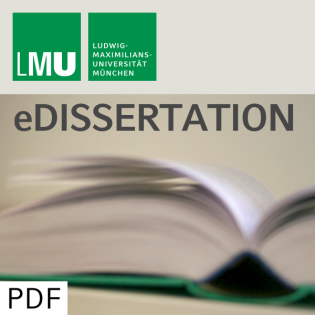
Electrodynamic absorber theory
Beschreibung
vor 14 Jahren
This work deals with questions that arise in classical and quantum
electrodynamics when describing the phenomena of radiation reaction
and pair creation. The two guiding ideas are the absorber idea of
Wheeler and Feynman (i.e. all emitted radiation will be again be
absorbed by matter) and the electron sea idea of Dirac. In the
first part classical dynamics are studied which allow for a
description of radiation reaction without the need of
renormalization. The starting point are the coupled Maxwell and
Lorentz equations without self-interaction. Based on the notion of
absorber medium, it is shown how the so-called Lorentz-Dirac
equation for radiation reaction emerges and the intimate connection
to the famous Wheeler-Feynman action at a distance electrodynamics
is explained. Based on this, the mathematical problem of the
existence of solutions to the Wheeler-Feynman theory, which is
given by a functional differential equation, is rigorously
analyzed. In the second part the phenomenon of pair creation is
discussed from a thermodynamic perspective in which the Dirac sea
satisfies the absorber condition. Taking Dirac's original idea
seriously, the vacuum is to be regarded as an equilibrium state in
which all net-electron-electron interactions vanish. Small
departures of this equilibrium can be effectively described by
introducing pair creation. For the mathematical discussion these
seas are considered to consist of infinitely many electrons (in the
thermodynamical limit). The mathematical implementation of the
quantum mechanical time-evolution for such infinitely many electron
seas subject to prescribed external four-vector fields is then
carried out in detail. The main result is that the probability
amplitudes induced by this time-evolution are well-defined and
unique. In a last part we give a perspective on the quantization of
Wheeler-Feynman-like inter- action. Based on the proposed
equations, a derivation of the Dirac-Barut equation is given, which
seems to predict QED corrections in accordance with the experiment.
electrodynamics when describing the phenomena of radiation reaction
and pair creation. The two guiding ideas are the absorber idea of
Wheeler and Feynman (i.e. all emitted radiation will be again be
absorbed by matter) and the electron sea idea of Dirac. In the
first part classical dynamics are studied which allow for a
description of radiation reaction without the need of
renormalization. The starting point are the coupled Maxwell and
Lorentz equations without self-interaction. Based on the notion of
absorber medium, it is shown how the so-called Lorentz-Dirac
equation for radiation reaction emerges and the intimate connection
to the famous Wheeler-Feynman action at a distance electrodynamics
is explained. Based on this, the mathematical problem of the
existence of solutions to the Wheeler-Feynman theory, which is
given by a functional differential equation, is rigorously
analyzed. In the second part the phenomenon of pair creation is
discussed from a thermodynamic perspective in which the Dirac sea
satisfies the absorber condition. Taking Dirac's original idea
seriously, the vacuum is to be regarded as an equilibrium state in
which all net-electron-electron interactions vanish. Small
departures of this equilibrium can be effectively described by
introducing pair creation. For the mathematical discussion these
seas are considered to consist of infinitely many electrons (in the
thermodynamical limit). The mathematical implementation of the
quantum mechanical time-evolution for such infinitely many electron
seas subject to prescribed external four-vector fields is then
carried out in detail. The main result is that the probability
amplitudes induced by this time-evolution are well-defined and
unique. In a last part we give a perspective on the quantization of
Wheeler-Feynman-like inter- action. Based on the proposed
equations, a derivation of the Dirac-Barut equation is given, which
seems to predict QED corrections in accordance with the experiment.
Weitere Episoden

vor 11 Jahren

vor 11 Jahren

vor 11 Jahren
In Podcasts werben






Kommentare (0)